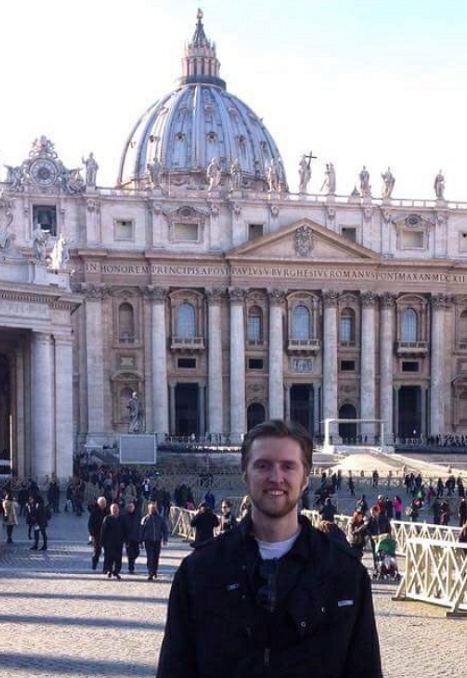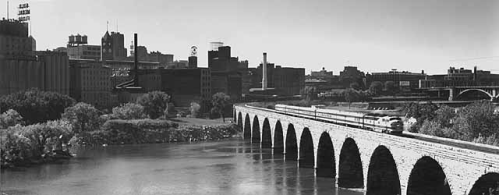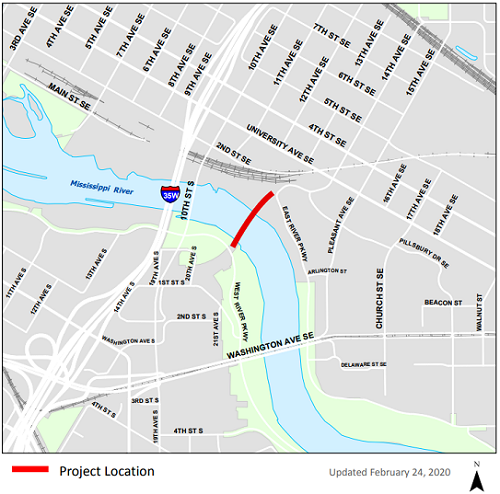The St. Anthony Zouaves
 Tuesday, August 2, 2022 at 7:16AM |
Tuesday, August 2, 2022 at 7:16AM |  Michael Rainville Jr |
Michael Rainville Jr | Article by Michael Rainville, Jr.
Sunday, April 14th, 1861, two days after the first shots of the Civil War were fired upon Fort Sumter; Governor Alexander Ramsey was visiting Washington D.C. when the news broke and became the first to offer troops to President Abraham Lincoln in order to quash the rebellion. Lt. Governor Ignatius Donnelly was notified of the situation and two days later, sent out a proclamation calling for one infantry regiment consisting of ten companies. At the time, many up-and-coming Minnesota communities had their own volunteer militias, and these militias would come together at Fort Snelling to form the 1st Minnesota Volunteer Infantry Regiment.
 1864 painting "The Brierwood Pipe" by Winslow Homer depicting two Zouave members of the 5th New York Volunteer Infantry.
1864 painting "The Brierwood Pipe" by Winslow Homer depicting two Zouave members of the 5th New York Volunteer Infantry.
As one of the state’s older towns, St. Anthony was well-prepared for the call-to-arms. On July 12th, 1856, the Falls City Light Guards formed and would march around the town practicing their drills. No conflicts arose during this time, so the militia disbanded. In 1859, a twenty-two-year-old Colonel Elmer E. Ellsworth formed the United States Zouave Cadets in Chicago and traveled across the East Coast and Midwest preforming drills in front of interested crowds. Zouaves, phonetically pronounced as ‘zwav,’ were a French North African light infantry regiment that became a popular model for militias across the world.
 Brigadier General George Morgan, 1863Col. Ellsworth introducing Zouaves to the U.S. mixed with the large population of French-Canadian immigrants in St. Anthony was the perfect recipe for a new local militia to form. At 8:00pm on August 3rd, 1860, twenty-two citizens attended a meeting hosted by Col. Richard Chute in his building, the first building of the University of Minnesota, in what is now Chute’s Square. Other notable attendees were George Eastman, one of the first entrepreneurs to utilizes the power of the falls, George Morgan, owner of the first foundry in the town and would later become a brigadier general in the Civil War, and John Gilfillan, a lawyer, congressman, University Regent, and one of the founders of the Minneapolis Public Library system. Hours later, the St. Anthony Zouaves were born. After the militia’s constitution was drafted, guidelines for admission were set, such as a payment of fifty cents, all members must acquire a uniform within thirty days of admission, and a height requirement of at least 5’6". A month later, the militia moved their meeting place to a hall located above a hardware store owned by John S. Pillsbury.
Brigadier General George Morgan, 1863Col. Ellsworth introducing Zouaves to the U.S. mixed with the large population of French-Canadian immigrants in St. Anthony was the perfect recipe for a new local militia to form. At 8:00pm on August 3rd, 1860, twenty-two citizens attended a meeting hosted by Col. Richard Chute in his building, the first building of the University of Minnesota, in what is now Chute’s Square. Other notable attendees were George Eastman, one of the first entrepreneurs to utilizes the power of the falls, George Morgan, owner of the first foundry in the town and would later become a brigadier general in the Civil War, and John Gilfillan, a lawyer, congressman, University Regent, and one of the founders of the Minneapolis Public Library system. Hours later, the St. Anthony Zouaves were born. After the militia’s constitution was drafted, guidelines for admission were set, such as a payment of fifty cents, all members must acquire a uniform within thirty days of admission, and a height requirement of at least 5’6". A month later, the militia moved their meeting place to a hall located above a hardware store owned by John S. Pillsbury.
After months of meetings and many fundraising events, the Falls Evening News noted in the December 14th edition of their newspaper that “the Company has been drilling twice a week for the last four months. From the accounts which leak out, some of the maneuvers must look ludicrous to a looker-on. They all go to make up the drill. Look to your laurels, Chicago,” a not-so-subtle jab at Col. Ellsworth’s United States Zouaves Cadets. As the months continued on, a rival militia formed across the river in Minneapolis, with Capt. W.D. Washburn at the helm. Surely this was the first account of the legendary Pillsbury-Washburn rivalry.
 A member of the 11th New York Regiment wearing a Zouave uniform, 1861.Wednesday, April 17th, 1861, the day after Lt. Governor Donnelley sent out a request to the militias of Minnesota to form an infantry regiment, the St. Anthony Zouaves held a meeting after they practiced drilling to inform their group of the call-to-arms. Six days later, the company held an election to determine who would lead their group. George Morgan was elected to the position of Captain, John Gilfillan became the 1st Lieutenant, and George Pamroy became 2nd Lieutenant.
A member of the 11th New York Regiment wearing a Zouave uniform, 1861.Wednesday, April 17th, 1861, the day after Lt. Governor Donnelley sent out a request to the militias of Minnesota to form an infantry regiment, the St. Anthony Zouaves held a meeting after they practiced drilling to inform their group of the call-to-arms. Six days later, the company held an election to determine who would lead their group. George Morgan was elected to the position of Captain, John Gilfillan became the 1st Lieutenant, and George Pamroy became 2nd Lieutenant.
While the other militias to report to Fort Snelling arrived in their uniforms, the St. Anthony Zouaves reported in their civilian clothing, black slouch hats, black trousers, and red flannel shirts. It is not known why they did not show up in their uniforms, but it is likely that they were embarrassed to show up wearing their Zouaves colors, as traditional Zouaves uniforms consisted of a fez, an embroidered vest, and red baggy pantaloons. During the following month, Company E, as they were now called, were a popular sight at Fort Snelling when they drilled, and civilian spectators would make the trek to the fort just to see the Zouaves in action. Their popularity grew, and on May 21st, 1861, they were invited to a dinner hosted by the ladies of Nicollet Island where they presented the Company with a handsewn American flag that they would carry throughout the duration of the war.
 34-star silk American flag, handmade by women in St. Anthony in May 1861 and given to the 1st MN Volunteer Infantry Regiment during the Civil War.
34-star silk American flag, handmade by women in St. Anthony in May 1861 and given to the 1st MN Volunteer Infantry Regiment during the Civil War.
Of the eighty-nine St. Anthony Zouaves members, thirty-six committed to the original ninety-day deployment. Five were transferred, seven were discharged for disability, twelve were wounded in battle, six were killed, one lost a leg, one died from effects of the war, and four served for the length of the war, holding on tight to that Nicollet Island-made American flag.
- - - - - - - - - - - - - - - - - - - - - - - - - -
 About Michael Rainville, Jr.
About Michael Rainville, Jr.
A 6th generation Minneapolitan, Michael Rainville Jr. received his B.A. in History from the University of St. Thomas, and is currently enrolled in their M.A. in Art History and Certificate in Museum Studies programs. Michael is also a historic interpreter and guide at Historic Fort Snelling at Bdote and a lead guide at Mobile Entertainment LLC, giving Segway tours of the Minneapolis riverfront for 7+ years. Contact: mrainvillejr@comcast.net. Click here for an interactive map of Michael's past articles.
























































































